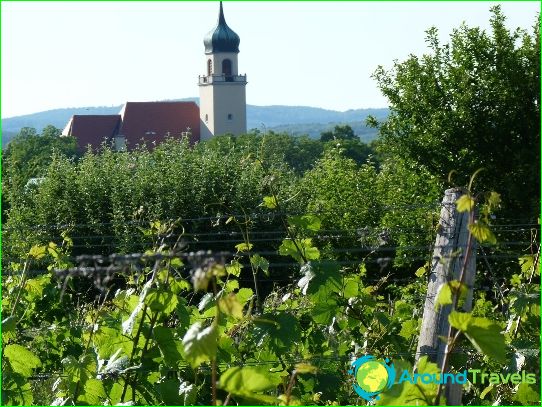Wines of Austria

Even the Celts in the 7th century BC. were engaged in viticulture and winemaking on the territory of modern Austria. With the arrival of the Romans, the area allocated for vineyards increased significantly. Emperor Charlemagne made an invaluable contribution to the development of Austrian winemaking by introducing a viticulture cadastre, and since then Austrian wines have received the first classification.
History with geography
Documentary references to Austrian wines are already contained in documents from the 16th century. Since then, the country's wine industry has experienced many ups and downs associated with wars, and with the adoption of new laws, and with economic growth, and with epidemics of agricultural pests..
The production of wine in Austria reached the industrial level in the middle of the twentieth century, when winemakers had new agricultural machinery, fertilizers and other technological innovations..
Most of the fruitful vineyards in Austria are located in the southeastern region. The ratio of white and red wines in Austria is dominated by light. The four main areas of the country where wine production is established are Styria, Vienna, Lower Austria and Burgenland..
Varieties and wines
The leading Austrian grape variety is Gruner, from which a light and lively white wine is produced, characterized by a fruity-spicy aroma and aftertaste. The Italian Riesling variety produces wines with pleasant sourness, fresh and sonorous. A soft and rich nutty flavor is characteristic of white wines from the Neuburger variety..
The red varieties of Austrian grapes are Zweigelt and Blaufränkisch. The first one gives gourmets a thick wine with a cherry aroma, which is customary to drink when young. Blaufränkisch berries are used to make wines with hints of blackberry and black currant aroma..
Classification and sugar
The main criterion for the complex classification of Austrian wines is the sugar content in the wort from which the drink is blended. The classification table is one of the most complex in the world and contains a dozen subclasses. Typical representatives of Austrian wines are as follows:
- TAFELWEIN table wines are the most popular category. Made from a mixture of grapes that can be harvested within the EU.
- Local LANDWEIN wine is made from the fruits of a specific region. They contain more alcohol and sugar than the previous ones..
- QUALITATSWEIN is a branded product, the region of production of which is indicated on the label. They have a special code that is assigned at special tastings.
- Cabinet wines of Austria KABINETTWEIN, bottled only in the country.



